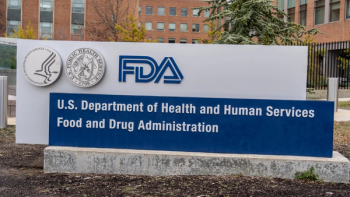No biopharma company wants to receive a complete response letter (CRL) on a drug that has taken years to test and major cash to develop—let alone a CRL an executive did not expect.
That’s what happened to Replimune Group, Inc., on July 22, when the FDA issued a CRL for the company’s advanced melanoma treatment, RP1. The move surprised the company, which said none of the issues raised in the CRL were addressed in mid- and late-cycle reviews.1
Key Takeaways
- FDA issued a CRL to Replimune for RP1 in a move that many industry experts described as surprising.
- New leaders at FDA have different priorities than previous leadership, which is likely to impact the agency's decision-making process.
- Pharma companies should prepare to update their strategies and not make assumptions based on past FDA activity.
The decision also surprised Wall Street analysts and investors. The news dropped before the market opened on July 22, and the company’s stock proceeded to plunge nearly 77%, from about $13-a-share to around $3-a-share. Prior to the news, the investors expected RP1 to be approved on accelerated approval pathway and described the rejection as a surprise.
A similar but perhaps less dramatic story played out earlier in July, when Capricor Therapeutics, Inc. received a CRL for its investigational Duchenne muscular dystrophy therapy, citing outstanding items in the chemistry, manufacturing, and controls part of the application, which the company claimed it had already addressed.2
Both organizations have since requested Type A meetings with FDA officials to discuss their paths forward.
Replimune and Capricor are individual situations but, taken together, they raise new questions for both the biopharmaceutical industry and investors alike. Pharma and biotech obviously rely on FDA approval, and these recent announcements have many people wondering what to expect next. How will these changes impact investors and how pharma companies communicate with them? More importantly, how can industry and investors adjust their strategies for these new rules?
How can pharma companies prepare and strategize based on recent unexpected FDA decisions?
One factor is that leadership at the FDA has changed since Replimune submitted its BLA under the accelerated approval pathway in November 2024. Many senior regulators have left or been forced out as part of a leadership and staff shakeup. Meanwhile, the agency has also pushed transparency, recently publishing hundreds of CRLs from past years, although only those for drugs that were ultimately approved.
So now biopharma companies with drugs in the review process and an approaching PDUFA date are wondering: Will we be next?
"This decision at the end of the process is difficult,” said Replimune CEO Sushil Patel , Ph.D., in a July 23 interview with BiotechTV. “I do think it’s going to make it extremely difficult for small companies such as us—investors also—to have trust that they are going to put money into companies with innovative products, if they feel that things could change late in the process. ... There's also patients waiting at the end of the day."3
It’s a challenging time for drug developers because of this uncertainty, especially those that based their development strategies and investments on the communications they had with FDA officials from the prior administration, said Craig Lipset, co-chair, Decentralized Trials & Research Alliance, in an email interview with Applied Clinical Trials, a sister brand of Pharmaceutical Executive.
“It raises questions for developers today as to whether past understandings still hold true, as well as the potential risks and benefits of re-engaging with FDA on active development programs based on those past agreements,” Lipset said.
Replimune: The story so far
The CRL to Replimune’s oncolytic immunotherapy candidate, RP1, did more than derail a priority review. It jolted investors and sparked questions about how the agency is communicating expectations. The timeline below tracks the pivotal regulatory and market moments that led to and followed the CRL.
For biopharma leaders, it’s a case study in why planning for multiple regulatory scenarios has never been more critical. Here’s a timeline of events:
- Nov. 21, 2024: Replimune announces it has submitted its biologics license application (BLA) for RP1 under the accelerated approval pathway and that the FDA has granted Breakthrough Therapy designation for RP1 plus nivolumab in anti–PD-1–failed advanced melanoma.
- Jan. 21, 2025: FDA accepts the BLA and grants Priority Review, setting a PDUFA action date of July 22, 2025; FDA says no advisory committee is planned and no review issues are identified at that time.
- March 2025: Replimune reiterates Priority Review status and the July 22 PDUFA date in its quarterly report.
- May 6, 2026: Vinay Prasad, MD, a hematologist oncologist, is named new lead for the FDA’s Center for Biologics Evaluation and Research.
- Early July 2025: Investor optimism grows; Replimune shares rise about 32% in the weeks leading up to the decision.
- July 22, 2025 (pre-market): Replimune publicly discloses the CRL; press release states FDA found IGNYTE was “not an adequate and well-controlled” study and could not be “adequately interpreted” due to patient heterogeneity. Replimune CEO Sushil Patel, PhD, responded: “The issues highlighted in the CRL were not raised by the agency during the mid- and late-cycle reviews. Additionally, we had also aligned on the design of the confirmatory study.” The company stock plunged up to 77%, triggering multiple trading halts; shares ultimately fell below $3. Replimune requested a Type A meeting with FDA within 30 days to discuss the path forward.
The role of FDA leadership
Federal agency priorities always change when new presidential administrations take over, and in 2025, many high-profile regulators left or were forced out.
One of those high-profile officials who left was Peter Marks, MD, the former head of FDA’s Center for Biologics Evaluation and Research (CBER). His replacement is Vinay Prasad, MD.
When Prasad’s appointment was announced in early May, the biotech industry held its breath, because it indicated a tougher road ahead for cancer and rare disease developers. In past comments and writings, Prasad argued the FDA leaned too heavily on surrogate endpoints that don’t extend lives meaningfully and that drugs often cost too much for marginal benefit. His scholarship called for “more convincing clinical evidence.” His appointment immediately rattled markets, sending shares of cell and gene therapy companies sharply lower.4
When the Replimune CRL was released, Wall Street observers believed that Prasad’s leadership of CBER was a factor in the surprise decision. According to a report published in Investor’s Business Daily, analysts said Prasad likely played a “key role” in the decision.5
FDA’s CRL transparency push
Another factor in the changing world of FDA reviews to note is that in the event a biopharma company’ receives a CRL, it will probably go public.
Just prior to the Replimune announcement, the FDA revealed plans to publish CRLs as part of an initiative to embrace “radical transparency.” The agency published over 200 CRLs from 2020 to 2024, and FDA Commissioner Martin Makary, MD touted the initiative as a chance to provide clarity and predictability. for drug developers and capital markets.6
“Today we’re one step closer to delivering it to them, with an ultimate goal of bringing cures and meaningful treatments to patients faster,” he said.
For now, questions remain on what impact the transparency initiative will have going forward, said Monica Gorman, currently the managing director at Crowell Global Advisors in Washington, DC, in an interview with Pharmaceutical Executive. The CRLs that were published were older, and questions remain about what it means to publish them in real time, including for drugs that ultimately are not approved.
“There are very practical questions,” said Gorman, who is also former special assistant to the president for manufacturing and industrial policy and co-chair of the White House Supply Chain Disruptions Task Force. “Are there enough people to do the redactions? Obviously, the industry is going to have a lot of questions about confidential business information, trade secrets, and how all of that is going to be redacted. It’s difficult to know how the industry is going to respond from an investment standpoint until everyone has a better sense of what this actually means.”
Harpreet Singh, MD, former FDA division director of oncology and current chief medical officer at Precision for Medicine, called the move to make CRLs public a step toward greater transparency.
“It’s a testament to the agency’s evolving commitment to data sharing,” she said in an interview with Pharmaceutical Executive. “Making these letters public can help demystify regulatory decision-making and offer sponsors and investors valuable insights. That said, the current approach focuses only on CRLs for drugs that were ultimately approved, leaving out many instructive examples tied to programs that didn’t advance. Having issued CRLs during my time at the agency, I’ve seen how these letters can bring value to sponsors by guiding development strategy, and broader disclosure could further their impact.”
While other have praised transparency as a positive, there’s another issue that needs to be considered: what impact the negative publicity of a CRL can have on a small biotech with a promising therapy clawing towards launch.
While CRLs are not a death sentence for a product and it’s entirely possible for a company to recover, timing is a major issue. Pharma companies and drug developers already have long timelines from development to launch. While many in the industry are calling for that timeline to be sped up, the FDA seems to be making moves to slow things down.
For companies that are getting good news, the slowdown is still frustrating. For a company receiving a CRL, it could be devastating.
But, as Gorman explains, transparency is an important reminder that regulators have to answer to more than just sponsors.
“There’s a history that goes back through a couple of administrations of a desire for FDA to have more transparency as to the reasoning behind CRLs,” Gorman said. “Obviously, a letter does not mean that a drug will not ultimately be approved, but it provides more information as to why it’s not being approved right now. There’s certainly an argument that FDA is representing both parties and it’s in the public interest to provide this information.”
How biopharma execs should respond
The CRLs for Replimune and Capricor, leadership changes at key FDA centers and an unprecedented push for regulatory transparency are a signal that past assumptions may no longer hold; executives can’t bank on mid-cycle signals or legacy agreements anymore.
The path forward demands tighter evidence, documented alignment, and contingency plans that protect both timelines and investor confidence.
Here are four ideas to consider:
- Reconfirm and document FDA alignment early.
Don’t rely on old understandings. Push for written clarity on endpoints, CMC expectations, and confirmatory plans—and keep meticulous records of every agreement. - Design trials and CMC packages to withstand scrutiny.
Minimize heterogeneity, tighten statistical plans, and stress-test “adequate and well-controlled” standards. Audit CMC sections with third parties to close gaps before FDA finds them. - Scenario-plan for a CRL—and assume it will be public.
Build parallel timelines (best/base/CRL), pre-draft Type A materials, and prepare redaction-ready documents. Coordinate legal, regulatory, and investor relations teams on same-day messaging. - Manage investors with a spectrum, not a binary.
Reset expectations away from “approve/deny.” Communicate multiple regulatory outcomes and capital implications, and brief key stakeholders on how you’ll respond if a CRL lands.
Dealing with uncertainty is nothing new for the pharmaceutical industry and its leadership. As Lipset, of the Decentralized Trials & Research Alliance, said, it’s up to the industry to push for clarity: “Sponsors must help communicate to FDA leaderships the urgency of regulatory clarity, as new leaders at the agency seem very committed to transparency and communications.”
Sources
- Replimune Group, Inc. Replimune receives complete response letter from FDA for RP1 biologics license application. Replimune Investor Relations website. Published July 22, 2025. Accessed July 24, 2025. https://ir.replimune.com/news-releases/news-release-details/replimune-receives-complete-response-letter-fda-rp1-biologics
- Capricor Therapeutics, Inc. Capricor Therapeutics provides regulatory update on Deramiocel BLA for Duchenne muscular dystrophy. GlobeNewswire. Published July 11, 2025. Accessed July 24, 2025. https://www.globenewswire.com/news-release/2025/07/11/3113911/0/en/Capricor-Therapeutics-Provides-Regulatory-Update-on-Deramiocel-BLA-for-Duchenne-Muscular-Dystrophy.html
- Patel S. Interview: July 23, 2025. BioTechTV. Published July 23, 2025. Accessed July 24, 2025. https://www.biotechtv.com/post/sushil-patel-july-23-2025
- BioPharma Dive. Vinay Prasad’s appointment at CBER signals tougher evidence standards for cancer and rare disease approvals. BioPharma Dive. Published May 8, 2025. Accessed July 24, 2025. https://www.biopharmadive.com/news/vinay-prasad-cber-fda-drug-approvals-research/747497/
- Investor’s Business Daily. Replimune stock craters after surprise FDA rejection of melanoma treatment. Investor’s Business Daily. Published July 22, 2025. Accessed July 24, 2025. https://www.investors.com/news/technology/replimune-stock-surprise-fda-rejection-melanoma-treatment/
- US Food and Drug Administration. FDA embraces ‘radical transparency,’ publishing complete response letters. FDA Press Announcements. Published July 10, 2025. Accessed July 24, 2025. https://www.fda.gov/news-events/press-announcements/fda-embraces-radical-transparency-publishing-complete-response-letters





